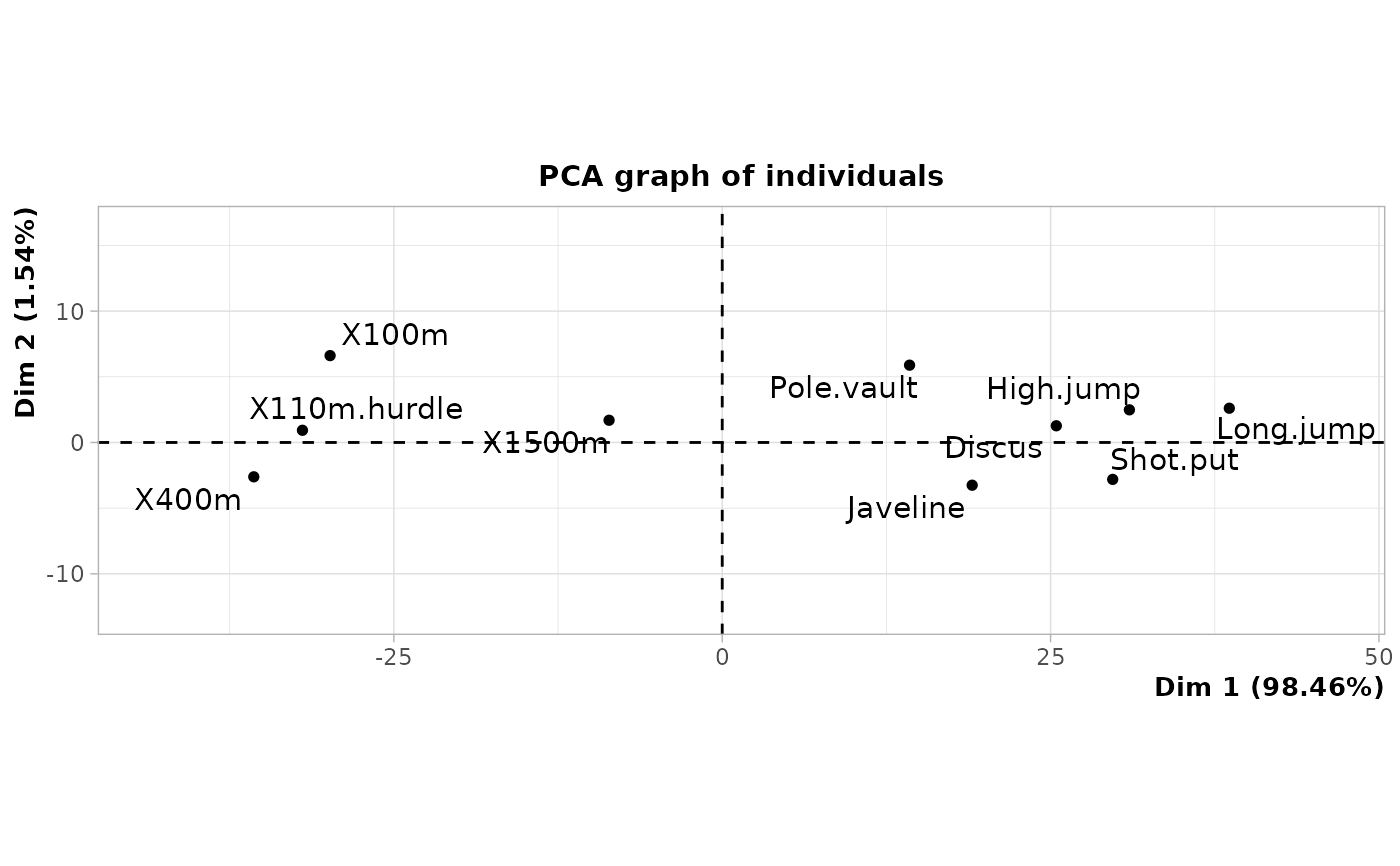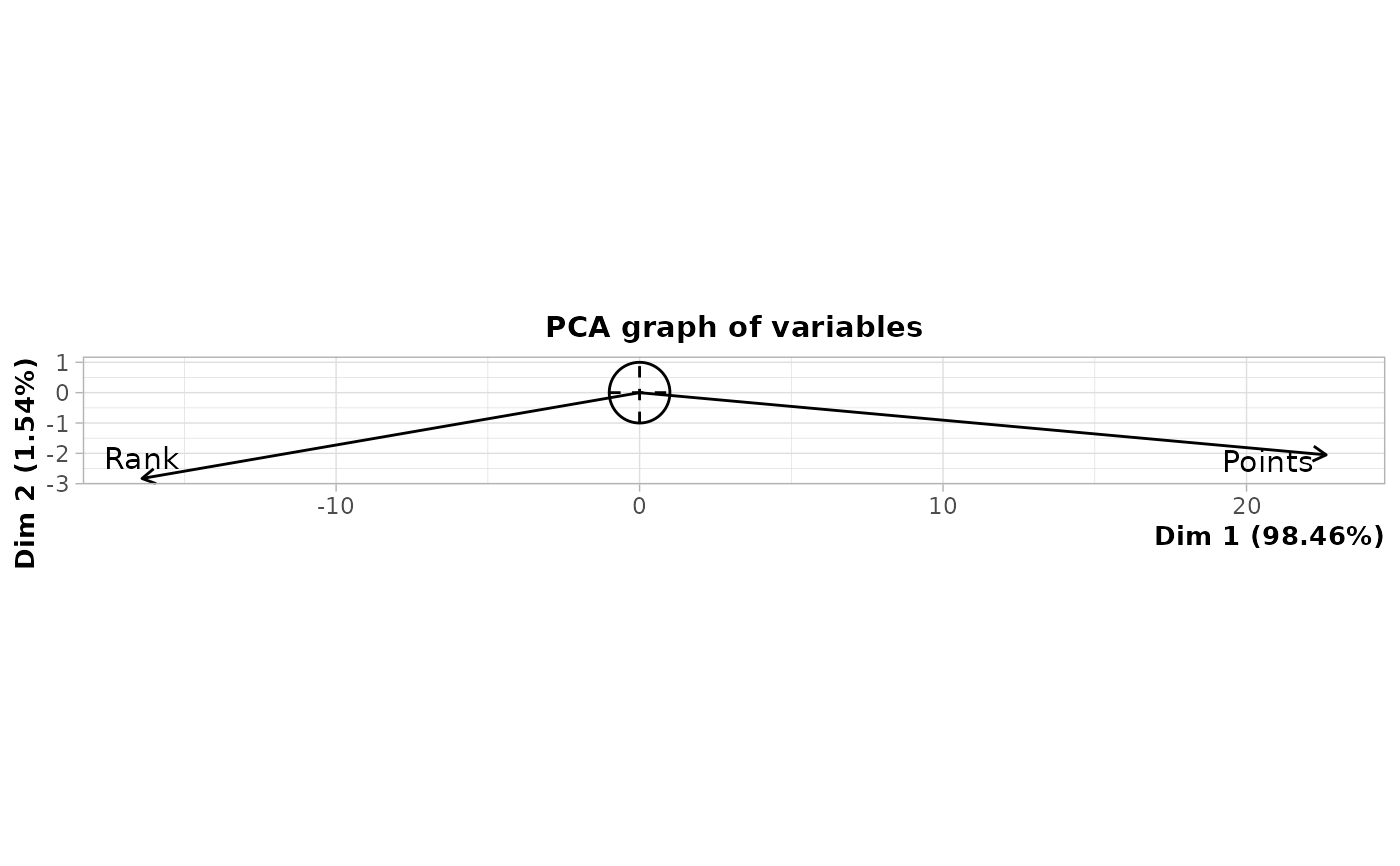Coinertia analysis between two groups of numerical variables
coiPCA.RdCoinertia analysis between two groups of numerical variables
coiPCA(Xa, Xb, row.w = NULL, ncp = 5)Arguments
Details
Coinertia analysis aims at capturing the structure common to two groups of variables. With groups of numerical variables, it is equivalent to Tucker's inter-battery analysis. It consists in the following steps : 1. Variables in Xa and Xb are centered and scaled 2. Computation of the covariance matrix t(Xa).Xb 3. PCA of the matrix
Value
An object of class PCA from FactoMineR package, with an additional item :
- RV
the RV coefficient between the two groups of variabels
References
Tucker, L.R. (1958) An inter-battery method of factor analysis. Psychometrika, 23-2, 111-136.
Dolédec, S. and Chessel, D. (1994) Co-inertia analysis: an alternative method for studying species-environment relationships. Freshwater Biology, 31, 277–294.
Examples
library(FactoMineR)
data(decathlon)
# variables of results for each sport
Xa <- decathlon[,1:10]
# rank and points variables
Xb <- decathlon[,11:12]
# coinertia analysis
res <- coiPCA(Xa, Xb)
# plot of variables in Xa
plot(res, choix = "ind")
 # plot of variables in Xb
plot(res, choix = "var")
# plot of variables in Xb
plot(res, choix = "var")
 # RV coefficient
res$RV
#> [1] 0.09265003
# RV coefficient
res$RV
#> [1] 0.09265003